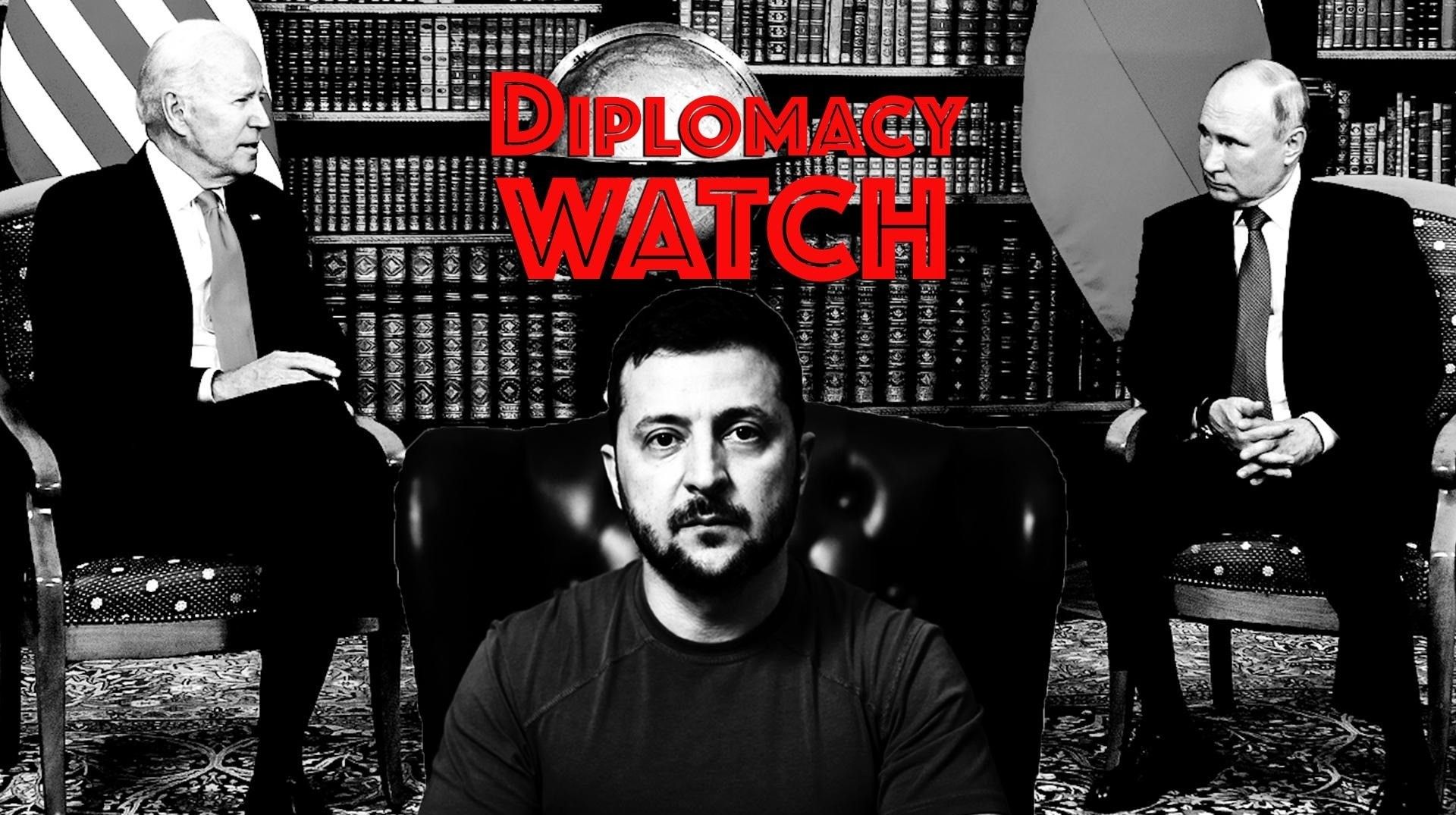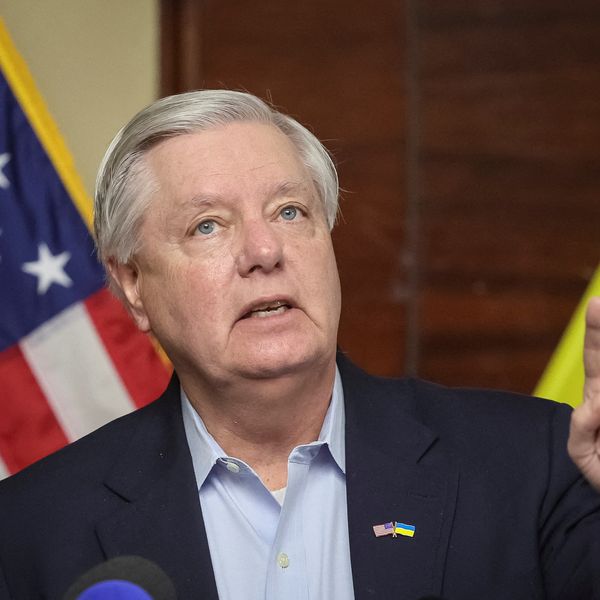Ukrainian President Volodymyr Zelensky chided NATO states this week for their unwillingness to directly join the fight against Russia.
“What’s the issue with involving NATO countries in the war? There is no such issue,” Zelensky told the New York Times in a fiery interview. Western planes could simply “shoot down what’s in the sky over Ukraine” without leaving NATO territory, he argued, thus mitigating escalation risks.
Zelensky added that he would welcome any plans to send NATO soldiers to support Ukraine’s war effort on the ground. The Ukrainian leader also asked Western states to allow Ukraine to use their weapons to target military sites within Russian territory.
Zelensky’s increasingly desperate pleas come at a difficult time for Ukraine. It has now been over a year and a half since Kyiv made any substantial gains on the battlefield. As political scientist Graham Allison recently pointed out, Russia took more territory in the past two months than Ukraine liberated in its entire 2023 counteroffensive.
Ukraine has attempted to regain an advantage through a campaign of attacks on Russian infrastructure, including fuel depots and power plants. The tactical shift is in part a response to Moscow’s long-standing campaign of strikes on Ukrainian energy infrastructure, which forced Kyiv to impose rolling blackouts this week for the first time since Russia’s 2022 invasion.
In this moment of crisis, the U.S. has chosen a Goldilocks approach. American officials have long opposed Ukrainian strikes on Russian territory, in part due to fears of escalation and in part due to the potential impact on global oil prices. But Secretary of State Antony Blinken appeared to soften that stance in comments last week.
“We have not encouraged or enabled strikes outside of Ukraine, but ultimately Ukraine needs to make decisions for itself on how it conducts this war,” Blinken said. “We will continue to back Ukraine with the equipment it needs to win.”
From Ukraine’s perspective, such comments are far too ambiguous. But American actions have been somewhat more direct. Just a few weeks ago, Washington revealed that it had secretly given long-range missiles to Kyiv that are capable of striking deep within Russian territory.
The U.S. has been firmer in its opposition to sending troops to Ukraine or directly helping to shoot down Russian missiles. While some NATO states have warmed to the idea of deploying soldiers to the country, Gen. C.Q. Brown, the chairman of the Joint Chiefs of Staff, said Monday that “right now, there are no plans to bring U.S. trainers into Ukraine.”
“Once this conflict is over and we're in a better place, then I would suspect we would be able to bring trainers back in,” Brown said.
As Zelensky plays down fears of nuclear escalation, the Kremlin is taking a different tack. Russian President Vladimir Putin ordered drills this week in which his troops practiced using tactical nukes. While these battlefield weapons are smaller than strategic warheads, certain variants can pack a bigger punch than the bombs that flattened Hiroshima and Nagasaki in 1945.
Russia said the drills, which took place near the border with Ukraine, were a response to “provocative statements and threats of certain Western officials regarding the Russian Federation.”
The escalatory move highlights a diplomatic tension that the Biden administration has yet to address. While Ukraine and the U.S. have a strong shared interest in making Russia pay for its invasion, Washington’s superseding goal is to prevent nuclear escalation by avoiding a direct conflict with Moscow. Ukraine, for its part, has every reason to drag the U.S. into a war that Kyiv views as existential.
European states are stuck in the squishy middle. Europe has stronger incentives to back Ukraine to the hilt, hence why countries like France and Britain have floated plans for more direct involvement in the war. But any sudden move would naturally implicate their most powerful ally, the United States, which has strongly discouraged any efforts to drag NATO into the conflict.
The West has largely papered over these divisions by insisting that it will continue to back Ukraine “as long as it takes.” But, as Kyiv’s battlefield position worsens, that approach could have an expiration date.
In other diplomatic news related to the war in Ukraine:
— Ukraine could enter formal talks to join the European Union by the end of June, according to Politico. The main obstacle to this step is Hungary, which has long been skeptical of bringing Ukraine into the bloc, in part due to controversies surrounding Hungarian minorities in the country. But, with Budapest taking over the rotating presidency of the European Council in July, some diplomats speculate that Hungarian officials would rather get the issue out of the way as soon as possible, especially given that there will be plenty of future opportunities to derail Kyiv’s accession in the coming years.
Ukraine’s larger and longer-term impediment will be bringing its political system in line with the standards for EU membership, which will require efforts to root out corruption and strengthen democratic systems in the country.
— Last Friday, the EU moved to ban four Russian media outlets that the bloc described as “essential and instrumental in bringing forward and supporting Russia's war of aggression against Ukraine,” according to Reuters. The decision to block the Russian-language outlets followed a previous move to ban Russia Today and Sputnik, both of which have broadcasts in English. The Kremlin pledged to “respond with lightning speed and extremely painfully for the Westerners” without revealing exactly what that means.
— In this week’s edition of “who’s mad at France,” American and European officials fumed over French President Emmanuel Macron’s decision to invite a Russian representative to D-Day commemorations next month, according to Politico. “Perhaps this will remind the Russians that they actually fought real Nazis once, not imaginary ones in Ukraine,” an anonymous U.S. official told Politico. The event will provide a rare scene: Biden, Macron, and even Zelensky will stand side-by-side with a Russian official for one of the first times since Russia’s 2022 invasion.
— In part deux of “who’s mad at France,” Zelensky chided Macron for suggesting a worldwide truce during the Paris Olympics this summer, according to Agence France Presse. “Let's be honest... Emmanuel, I don't believe it,” the Ukrainian leader said. “We are against any truce that plays into the hands of the enemy.” Chinese leader Xi Jinping threw his support behind the idea, but Putin has yet to say if he would endorse a truce.
— Ukraine is now offering parole to prisoners who sign up to fight Russia, with the exception of those convicted for particularly serious offenses, according to Reuters. Ukrainian officials say the decision could allow as many as 20,000 prisoners to join the war effort, providing a much-needed boost in manpower as the war drags on. Russia has faced harsh international criticism for its own policy of granting clemency to inmates who join the war on Moscow’s side, a policy that has given the Kremlin more than 50,000 extra soldiers.
U.S. State Department news:
In a Monday press conference, State Department spokesperson denied that the U.S. is using a double standard for International Criminal Court cases against Russian and Israeli officials. “There is a fundamental difference here and it’s that Israel said they were going to cooperate with the investigation. Russia did not,” Miller said. “Israel said they were going to cooperate with the investigation, talk to them about the charges that they were preparing to bring. And the ICC short-circuited that cooperation by bringing these charges.”
- When officials say the quiet part about Russia and NATO out loud ›
- 'Disaster' if US trainers go to Ukraine without a plan with Russia ›














